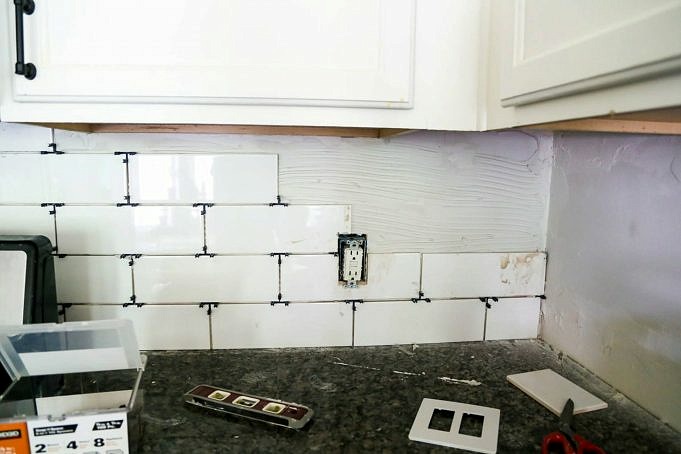You might consider a subway tile backsplash for your kitchen if you’re remodeling. It will add texture to the space and increase its visual appeal. You have the option of either hiring a contractor or doing it yourself if this is the path you choose. For the do-it-yourselfer, installing subway tile yourself can save you a lot of money, and you will still be able to have the same professional results. Video instructions and how-to video for installing subway tile backsplash
Step 1 Gather Your Tools And Material
You Will Need The Following Tools:
Materials Needed:
- Your choice of tile (marble, stone, glass, quartz, limestone, granite, slate, etc.)
- Tile Adhesive
- Spacers
Step 2 Set Up A Level Surface
To start, you need a level surface to build off, and this is true whether you are using stone or glass tiles. It is essential to get this precise and not to trust the levels of existing walls or countertops. Set up a tile on the corners or both extreme sides of the counter and run a laser level between the top of the two tiles. This guide will be used to temporarily attach a straight line to the wall. This is the area you will use for stacking your tiles. Next, you can go back to the end and finish the last row of tiles. Remember, you will be caulking the bottom seam, so any cuts that need to be made will be covered up.
Step 3 Pre-cut Half Tiles
Subway tile is typically staggered by halves from one row to the next. Before you start applying tiles, make sure to cut enough to cover every row on the other side of your kitchen.
Step 4 Spread Adhesive
Spread your adhesive in a corner of the kitchen. Keep in mind that less is better. You should leave a clean line from the trowel. Only spread and cover an area you can do in the set time of the adhesive, usually around 10 minutes.
Step 5 Rough Tile Set
Now you can start putting your tiles on the wall. You can start in one corner, and then work your way out. Remember to use your half tiles to stagger the rows. It is important to keep everything as clean as possible to minimize the cleanup at the end and to have the best results. Before you start setting tiles, make sure to measure the distance between them and then place a few on the wall. To prevent glue from clumping, place them against each other.
Step 6 Install Spacers
After you have a sufficient number of tiles set up, go back and add your spacers. This must be done before adhesive dries so make sure you work in groups. Set one spacer between each end of the tiles in each row. Set two spacers under each tile to separate the rows. This process should be repeated for all tiles.
Step 7 Dealing With Wall Sockets
At some point, you will have to work around an obstacle, such as a wall socket, or in some cases, a pipe. You should leave enough space for an electrician to work while you do this. Resetting the offset on the opposite side of the obstacle is important as well. The halfway point of the first half of the second whole time should be marked on the opposite side of the socket. Line it up with grout line. Make sure any space you leave will be covered up by the plate around the socket.
Expert tip It is easier to attach the adhesive to the tile than to the wall when working in tight areas around electrical sockets.
Step 8 Continue Until Finished
Continue this process until the desired area is covered. You can cover the entire wall, or just the area under the cabinets. You should have a nice backsplash once it is complete.
To see more and watch a pro install some tile, watch this video!



